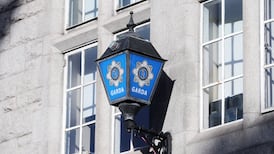ABOUT 3,800 people who earned more than €100,000 last year paid no tax on their income, according to estimates prepared by the Revenue Commissioners.
These individuals were able to avail of tax breaks in areas such as property investment and business expansion schemes, as well as tax relief on trading losses.
The projections for last year are based on information collected in 2007, according to the Revenue Commissioners, and no definitive data for last year is available.
A breakdown of the figures shows that most of those who had zero tax liability were company directors, while just over 600 were classified as PAYE workers.
A spokesman for the Minister for Finance Brian Lenihan said the figures should be treated with caution given that the Government had closed off many tax shelters in recent years.
However, the Labour Party’s finance spokeswoman Joan Burton insisted that the figures showed that significant numbers of high earners were still able to reduce their tax rates through aggressive tax planning.
“There are still an astonishing number of high earners who have numerous ways of mitigating their tax liabilities to the point of zero,” she said.
“Some of these tax breaks which the Government says have been closed off, have very long tails. In property tax breaks, people are still benefiting from very large write-downs on capital.”
Official figures show that tax relief on capital allowances, property-based Section 23 schemes, and on investment in film-making continue to cost the State hundreds of millions of euro. While many have been closed down or restricted, some have a shelf-life of five years or more.
A spokesman for Mr Lenihan said the Government had adopted a significant number of measures to “ensure all citizens pay their fair share of tax”. Since 2006, property tax incentive schemes and many other tax reliefs have been closed off.
In addition, measures introduced in 2007 imposed a minimum effective tax rate of up to 20 per cent for high earners availing of tax reliefs with incomes in excess of €250,000.
This tax rate was increased by up to 30 per cent for those earning more than €125,000 and availing of reliefs in this year’s budget by Mr Lenihan. Despite these measures, there are still some loopholes.
For example, the latest official breakdown on the 423 highest earners in the State showed that for 189 individuals who earned €500,000 or more in 2008, the average tax rate was 19.86 per cent.
However, for 234 individuals earning between €250,000 and €500,000 per annum, 54 paid tax at 0-5 per cent. A further 34 paid tax at less than 10 per cent.
The biggest category of tax relief used by this category of people was the writing-down of allowances in respect of capital expenditure on hotels and holiday camps. This was followed by tax relief on dividends from exempt patent income and the artists’ exemption.
The Department of Finance said measures introduced recently had significantly increased the tax take from this group, with an additional €40 million in tax revenue because of new restrictions.
It says more changes in the 2010 Finance Act would further increase the tax liabilities of this group.
While some high earners may be able to escape paying high rates of tax, a breakdown of the overall level of income tax paid by workers in the State paints a different picture.
Latest Revenue projections indicate that the top 2 per cent of earners accounted for almost one third (32 per cent) of tax collected during 2009.
The top 5 per cent of earners accounted for almost half (48 per cent) of the total income tax take.
The figures also show how many low-income workers are shielded from income tax. Almost half of all workers (46 per cent) earning below a certain threshold were estimated to be entirely exempt from traditional income tax, although some were liable for the income levy.










